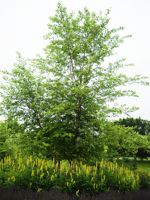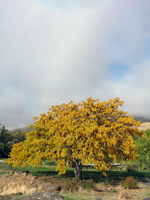Mon-Fri 9am - 5pm Mountain time
River Birch vs Thornless Honeylocust
Betula nigra
Gleditsia triacanthos inermis
NOT AVAILABLE THIS SEASON - MIGHT RETURN
River Birch has beautiful, peeling, brown bark that reveals camel-colored and pink beneath. It is more borer resistant than white bark birches, which makes it a much longer-lived landscape tree.
Thornless Honey Locust makes an excellent shade tree with its lacy foliage and dappled shade. The leaves are honey-yellow, light and airy, providing interesting color and texture to your landscape. This variety is thornless, and the seeds and pods provide food for wildlife such as deer and squirrels.
The Thornless Honey Locust is tolerant of drought, various soil conditions, and even road salt.

